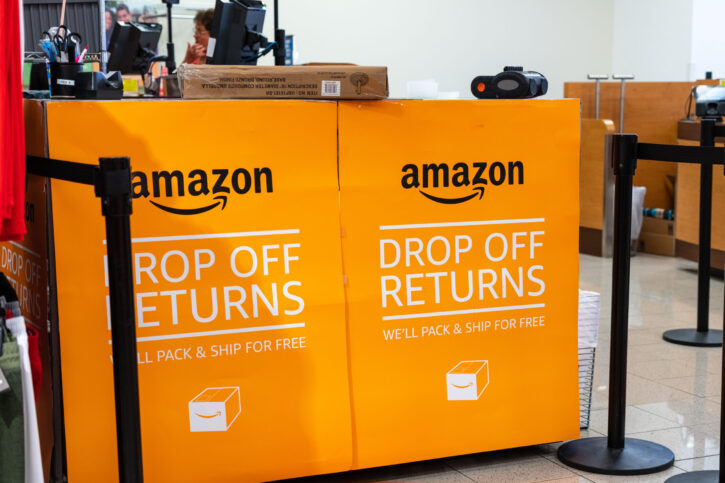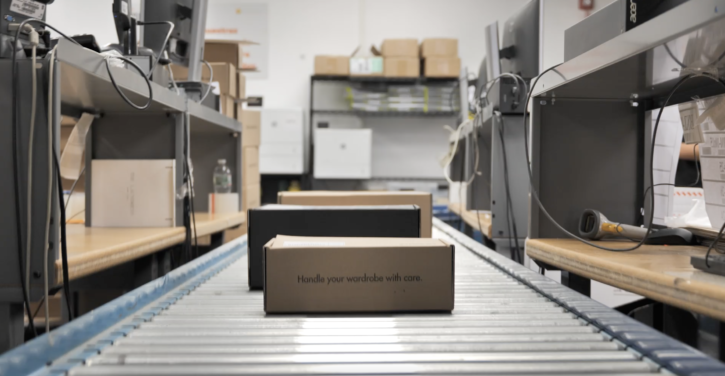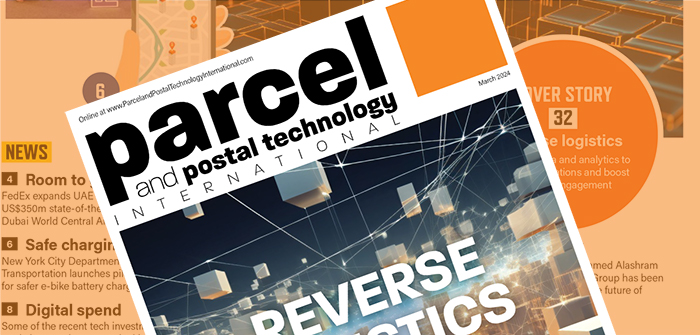Reducing the complexity of the returns process is top of mind for retailers looking to steal a march on their competitors and minimize their environmental and financial impact. Statista figures show that the reverse logistics market grew to US$664.9bn globally in 2022 and is forecast to hit US$954bn by 2029 – presenting a big opportunity for postal operators and logistics providers.
But for all its opportunity, the reverse logistics process is hugely complex and there is no easy fix. Efficiency must be at the heart and it’s here that analytics and big data can help.
“Optimizing the returns journey not only reduces costs but also enhances customer experience, cementing brand loyalty,” says Jerrad Hampson, founder of logistics consultancy Liberty Jai. “Big data, therefore, is not merely a tool for operational efficiency, but a strategy for enduring brand value.”
Tom Behnke, senior advisor at e-commerce and B2B retail fulfillment services provider Boxzooka, says the process starts with having technology platforms that compile and share data routinely for analysis tools to go to work. “The benefits start with ‘network optimization’ looking for gaps in the physical transfer of packages along the parcel and postal highway,” he explains.
But that is returns management at its most basic. Data collection and analytics around returns can identify trends that can be used to improve the reverse logistics process more widely. This can range from collecting data around the frequency of returns – to identify serial returners or possible fraudsters, for example – or highlighting product problems.
“Data and analytics give us the visibility we need to sniff out these trends and react accordingly,” continues Behnke. “What can we take from that knowledge to improve the customer experience and prevent the same issues causing more customers to return that merchandise in the future?”
Moving to intelligent returns
Digitalizing the returns process enables the introduction of more intelligent returns too, enabling the reverse logistics journey to be tailored to the customer or product type involved.
“Once you have the foundation, intelligent returns is really about moving away from a one-size-fits-all approach to what is a complex and multifaceted problem,” says Tim Robinson, corporate vice president of supply chain management company Blue Yonder.
Instead, he argues, the greater knowledge that data can bring can enable retailers to manage, at scale, the variables such as product, customer, location and time, and the options at their disposal to get that product back, such as incentivizing the right drop-off location (see Amazon’s ability to learn at the end of this article). “Intelligent returns give you the power to map the right responses for any scenario and automate it, all the way along the touchpoints of a return,” he adds.

The power to more dynamically route returned products is one of the biggest opportunities for retailers to reduce the cost of returns and improve the cost-effectiveness of how they deal with them, according to Mike Plasencia, group director of new product strategy at Ryder, a fleet and supply chain management specialist. “Today, big data and analytics can be used to help retailers transform their reverse logistics program by focusing on the net recovery of every return,” he explains.
“This is a shift in focus from simply getting the return back, to figuring out what to do with each return to maximize profit,” Plasencia continues. “Insights and pattern recognition can be used to predict the type and quality of returns. This becomes even more powerful when the end-to-end returns process becomes more connected, and retailers can use these insights to become prescriptive and dynamically make and execute data-driven decisions at different points throughout the lifecycle of a return to improve recovery.”
An example of this could be a valuable pair of sunglasses bought online that is typically returned in brand-new condition, suggests Plasencia. “Machine learning algorithms can identify this trend at the SKU level and integrations into the front-end customer experience enable logistics operators to dynamically route the package to the best retail destination for quick resale,” he explains.
The opportunities in this are among the most exciting. But again connectivity is key, warns Robinson. “If you’re still unable to resell the vast majority of returns, we’re still going to fill up landfill with returns,” he says. “You need to be able to connect all touchpoints from before purchaseto the point at which a returned item is back in stock and resalable, and to generate actionable insights from that journey so that retailers can take ownership over their returns and logistics providers can process them as efficiently as possible. That requires more than just a point solution at any one stage of the journey.”
Embrace the opportunities
So, are postal and logistics operators rising quickly enough to the opportunities offered by big data and analytics in reverse logistics?
Liberty Jai’s Hampson believes that leading entities are increasingly leveraging analytics to refine reverse logistics processes and better manage workloads. “By employing predictive analytics, these organizations gain the ability to forecast return volumes, understand return patterns and even identify potential fraud, enabling proactive management and operational fluidity,” he says.
However, Blue Yonder’s Robinson believes that postal and logistics companies could do more to capture the greater scale of information needed to transform the reverse logistics process further. “Most postal/logistics operators aren’t really offering this kind of intelligence capability to their customers, or to themselves,” he argues.
Although there is some optimization around the consolidation of returns by the likes of UPS, FedEx and Amazon, Robinson thinks that the returns journeys of most postal and carrier operators are focused on generating (and charging for) a label. “There’s not typically much in the way of data capture and intelligence,” he adds.

The challenges
As ever, the investment required is one barrier preventing postal and logistics operators from making more of the opportunity, but it’s not the only one. “The journey toward a data-driven reverse logistics operation is fraught with challenges,” argues Hampson. “Integrating diverse data sources into a cohesive system, maintaining data integrity and ensuring security are foundational hurdles.”
The integration of such diverse data sources is a major challenge, according to Mark Briganti, global post and parcel industry lead at Accenture. “The typical supply chain forposts may have myriad disconnected systems all producing data,” he asserts.
He believes there are numerous analytics platforms and tools that can help create a unified view. However, end-to-end returns management solutions are emerging that use customer data and rules along with supply chain data – from transportation, piece tracking, machine and IoT, for instance – to then natively automate and trigger processes. “These technologies can support the development of more tailored and customer-centric returns products and offerings,” he says.
Making sense of the data is hampered by skills shortages. “There is the task of building a skilled team capable of extracting actionable insights from complex data sets,” says Hampson. “Organizational resistance to change and the need to demonstrate the long-term value of these investments further complicate the transition.”
UPS supply chain solutions UK country manager James McLean thinks the industry needs to work together. “Overcoming these challenges requires collaboration with the industry, investment in skills development, and regulators,” he comments.
UPS is plowing money into new technologies to automate capabilities in returns logistics, including investing in new providers. “Last year, we acquired Happy Returns, a full-scale reverse logistics service, powered by smart technology,” McLean adds.
Briganti believes more companies will follow the partnership approach, such as the Happy Returns deal or DHL’s partnership with ReverseLogix. “There is certainly a skills and talent challenge,” he explains. “Partnership models may make more sense in the short run to accelerate the opportunities in this space and use inorganic talent to deliver new services.”
Ignoring the opportunity is not an option
Certainly, the one thing that postal and logistics operators can’t afford to do is sit and wait. The impact of big data and analytics in reverse logistics is exciting, especially when you add the impact of AI and machine learning – the full consequences of which will be huge, according to Robinson.
“We’re moving in steps, so from non-digital to digital, then from digital to a configured, rules-based intelligence, and then AI and machine learning enable you to scale up the variables you can take into account,” he says. “They can model the outcomes in advance and understand what changes could be made and how that drives value. They become self-optimizing systems.”
Hampson believes there are big wins to be had. “For those committed to this evolution, the rewards are substantial, offering a pathway to operational excellence and superior customer engagement. The benefits of embracing this approach extend beyond operational efficiencies to include substantial cost savings, enhanced customer loyalty and a stronger competitive position. Data’s strategic value cannot be overstated; in logistics 2024 and beyond, it’s the cornerstone of innovation and growth.”
Amazon’s ability to learn
Amazon is cited by many as one of the best examples of a company maximizing its use of data and analytics within reverse logistics. “They’ve got the benefit of seeing that full journey as both retailer and logistics provider, and their returns initiation, drop-off experience and efficiency all benefit from that complete picture,” says Blue Yonder’s Tim Robinson. Liberty Jai’s Jerrad Hampson agrees: “Amazon’s application of analytics to forecast return volumes, refine packaging and customize return options illustrates the profound effect of big data on enhancing the customer experience, setting a benchmark for retail logistics.”
“They’re connecting each return to the order that generated it, something many providers aren’t offering at the moment,” adds Robinson. “They’re applying custom rules to the initiation stage – you get different prices as a consumer to return to different locations, or to make a return for different reasons. That means they can incentivize drop-offs to locations that are maximally efficient for their network, responding to their current capacity.”
This article was originally published in the March 2024 issue of Parcel and Postal Technology International – click here to read now!



